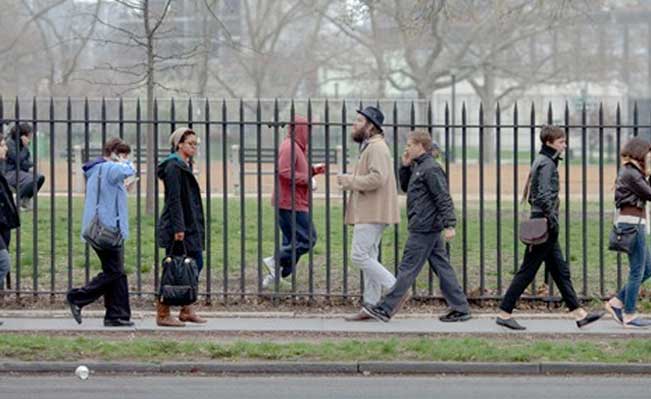 Photo credit: Walk Bedford
Photo credit: Walk Bedford
With debt-led growth concentrated in London, spurred onwards by a bubble in house prices, all the worst elements of the early 2000s have come back to haunt us says James Meadway
Today’s GDP figures, covering the first three months of 2014, tell us that the return to growth over the last year has settled in. But the headline figures disguise a set of serious, and perennial, problems.
First, forget about rebalancing
This was the entirely accurate idea, once quite popular in government circles, that part of what drove the whole economy into the wall in 2008 was its over-dependence on the service sector – finance in particular. The crash in the UK was so bad, and the bailouts so expensive, precisely because finance was so big. The plan was to ‘rebalance’ the economy with a ‘march of the makers’.
But while manufacturing has grown strongly over the last three months, on current performance manufacturing output will not recover to its 2008 level before 2019. Service output, meanwhile, is already above its 2008 level. In other words, our economy is becoming more focused on services, not less. The particularly troubling consequences here are for the labour market. With services industries in general paying less than manufacturing, and in particular driving the creation of low-paid, insecure work, an increasingly service-heavy economy is one we can expect to provide more of the proverbial ‘crap jobs’.
Second, despite some hurrah-making last week, growth is not translating into increase in real earnings
While the latest headline figures showed average earnings rising faster than inflation – by 1.7% over the last year – the reality for most is very different. Remove bonuses from the equation, and our averae earnings are rising by just 1.4%, which is in fact lower than inflation (currently at 1.6% according to the government’s preferred measure of inflation, the Consumer Price Index). In other words, real earnings are still falling for most people as prices rises continue to outstrip wages.
It gets worse. CPI is an unreliable guide to the cost of living for most of us, not least because it excludes the cost of housing. With the average UK household now spending 40% of their income on housing costs, this is clearly a major omission. The older Retail Prices Index (RPI), which includes housing costs and is calculated on a different basis, suggests inflation is now running at 2.5% a year, well ahead of increases in earnings. Nor is this situation likely to improve any time soon. On the RPI measure of inflation, the government’s forecasters, the Office for Budget Responsibility (OBR) forecast falling real earnings virtually every year until 2018. The fall in real earnings since 2008 is the longest sustained decline in most people’s living standards since the 1870s.
Third, the growth that we are seeing now is driven by household debt
Household spending rose 2.4% from 2012 to 2013, the fastest rate of growth since 2007. Yet, as we know, average real earnings are falling. So spending by households is once again being sustained by falling savings and a return to borrowing – and most likely the impact of inequality, too, with the average figure disguising variation. We are setting up, in other words, exactly the conditions that helped produce the crash of 2008: debt-led growth, in which stagnant or falling real earnings are masked by increasing levels of household debt that sustain continued consumer spending.
So the message, as we’ve stressed before, is that this isn’t so much a recovery as a relapse. With debt-led growth concentrated in overheated London, spurred onwards by an extraordinary bubble in house prices, it’s as if all the worst elements of the early 2000s had come back to haunt us: property bubbles, rising debt, stagnant wages, increasing inequality, growing insecurity at work…
It wasn’t sustainable then; there are few reasons to think it will be sustainable now.
From Nef

